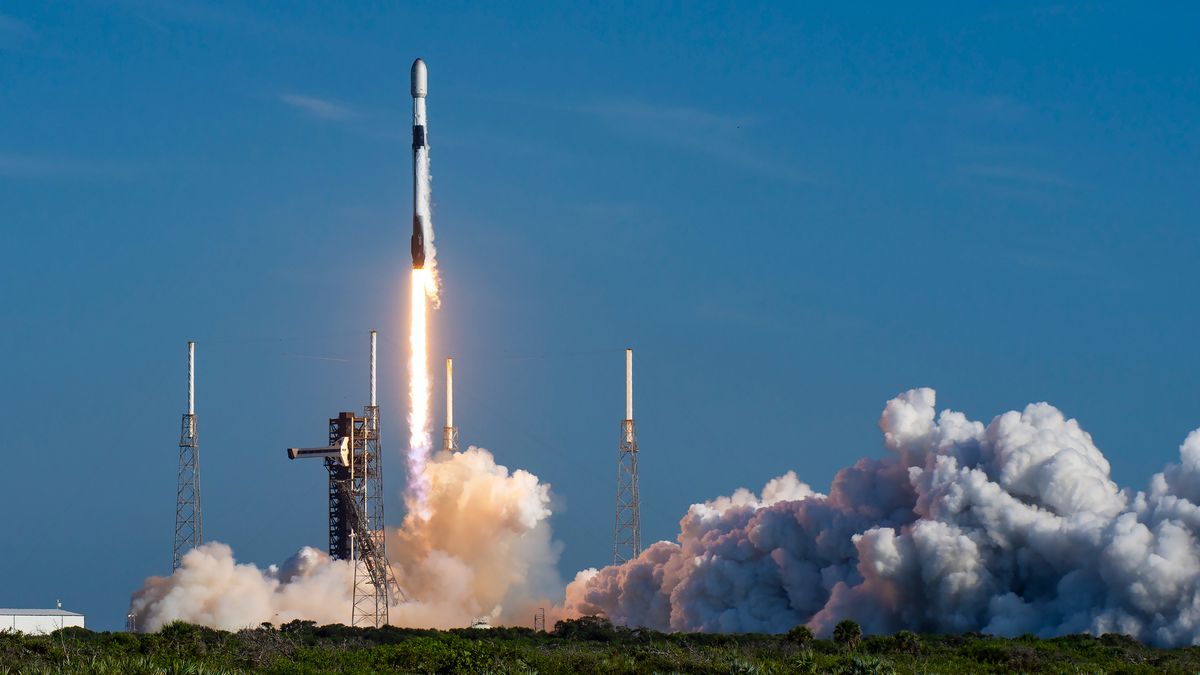
SpaceX plans to launch 20 more of its Starlink broadband satellites, including 13 with direct-to-cell capability, from California early Wednesday morning (Sept. 25).
A Falcon 9 rocket carrying 20 Starlink spacecraft is scheduled to lift off from Vandenberg Space Force Base, on California’s central coast, Wednesday at 3:01 a.m. EDT (0701 GMT; 9:01 p.m. on Sept. 24 California time).
You can watch the action live via SpaceX’s X account; coverage will begin about five minutes before launch.
If all goes according to plan, the Falcon 9’s first stage will come back to Earth 8.5 minutes after liftoff, landing on the SpaceX drone ship “Of Course I Still Love You” in the Pacific Ocean.
It will be the 10th launch and landing for this particular booster, according to a SpaceX mission description.
The Falcon 9’s upper stage, meanwhile, will continue powering its way to low Earth orbit, deploying the 20 satellites there 60 minutes after liftoff. The newcomers will join the Starlink megaconstellation, which consists of more than 6,300 active spacecraft.
Related: Starlink satellite train: How to see and track it in the night sky
RELATED STORIES:
The Starlink launch is part of a typically busy week for SpaceX. Elon Musk‘s company aims to launch the Crew-9 astronaut mission to the International Space Station (ISS) for NASA on Saturday (Sept. 28), sending it aloft via a Falcon 9 from Florida’s Cape Canaveral Space Force Station.
Crew-9 isn’t your typical ISS astronaut mission. It will launch with two crewmembers instead of the usual four, because it will take home to Earth two people already living on the ISS — NASA’s Suni Williams and Butch Wilmore, who arrived in June aboard Boeing’s Starliner capsule.
Starliner suffered thruster issues on its way to the ISS, and NASA decided to bring the spacecraft home uncrewed as a result. Williams and Wilmore will come home with the two Crew-9 astronauts — NASA’s Nick Hague and Aleksandr Gorbunov, of Russia’s space agency Roscosmos — aboard the SpaceX Crew Dragon capsule “Freedom” in February 2025.



